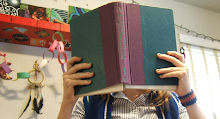well, here it is, folks. the bunting is done and will be wrapped nicely for summer. then, the weekend before
that weekend in august, it will be taken out, lovingly ironed, folded up, and placed in a special pocket for a journey to it's new home - an unknown pretend locker space in the land of theatre geeks, showing it's face (or triangles) only when special day comes for a person meeting certain criteria.
aka, the bunting is for our theater club birthday celebrations. except, we're in a delicate spot at the moment and so, i'm not sure where bunting will spend it's days.
ON TO THE FEATURE PRESENTATIONThis is the way I made my bunting. I read a bunch of tips/tutorials long before I did this, but I didn't follow specific instructions. Just the idea. So here's what I did.
Cutting Triangles. Okay, the the bunting itself is pretty simple once you get going. The hardest part (to me) is getting a template for the triangles. On graph paper, I sketched out a rectangle and it's diagonals. I erased off the bottom corners and messed with the angles until I got the triangle I wanted. it took a while to get it right, but it wasn't mathematically perfect. All it need to be is
LOOK like it's a nice triangle.
To make a sturdy template, I cut out the paper one I drew, then traced that onto some cardstock and then cut
that out. I can use it again when I make more bunting :D
Now's a good chance to think hard if you want a message on your bunting. "Happy birthday" uses 15 individual flags, including the space. Make sure you have enough fabric and remember that you need
two pieces for one flag.
So after that, I spread out the fabric and started cutting. Then, I organized the triangles the way I wanted them. I made sure to stack them with the pretty side in, just like I had to sew them. That way, there was less room for mistakes.
By the way, I chose fabrics that don't necessarily go together, but ones that looked good
next to one another. My blue plaid didn't look good next to the yellow circusy dots, but when I in added the green and pink prints, they were "linked" together.
Sewing the triangles. When the triangles are ready, take 'em over to the sewing machine (or your comfy chairthat you hand-sew in). I used a pin on each side of the triangle to keep it from going crazy, and also cut some slits after I sewed them up to help keep the shape nice and flat. I used a small, straight stitch about 1 cm from the edge. Also, I used a couple lonesome colors of thread. A light silver-grey for the bobbin and a pastel mint green for the top :)
Note - you don't need to sew the base (well, i mean the top, short edge) because it will be closed up later.
Once all that sewing is done, turn out your triangles. If you want extra crisp triangles, and I hope you do, then iron the flags flat. Are you ready to add on the message? If you don't want to, just skip past this part to the bias edging part.
Letteringness - There are many options for letters. I wanted a no-sew bit so that thread and stitches wouldn't show. and I didn't want much more weight because I wasn't sure (at this point) how nicely it was going to hang when it was done. So I opted for fabric paint and stencils.
I could have bought my own stencils, but I was picky and I wanted to try the freezer paper trick, anyway. It's really easy but you'll need some patience. Freezer paper is like a mesh of wax and parchment paper. Slick and shiny on one side, normal on the other. Make your stencils big enough, or you'll have this problem:
Note - for a stencil reference:
http://www.flickr.com/photos/bellgirl/4593720296/ also, her blog is much better at explainging this process than I am! It's here:
http://bellgirl.com.au/2009/07/tutorial-three-colour-freezer-paper.htmlCarfully iron the stencils in place. The waxy other side will be a little sticky with the heat, and will stay nice and flat on the fabric. Beware though, these don't work more than one or two times, so be careful! Now, take the other stray pieces, like the middle of the 'A' and iron those on. SUPER CAREFULLY!
When they cool down, move them to a piece of cardboard and start sponging on that fabric paint. Follow any instructions that the paint might need. Other than that, peel off the stencils. I don't bother letting the paint dry first, since it isn't like regular wall paint. Isn't it fun?
Trim off any excess so that the triangle corners meet nice and neat:
Bias Edging The last step! Okay, check up on your triangles. See the un-sewn edge? That is going to go right inside your bias tape. Fold your tape in half, mark it with a pin, and then pin the middle. Space out and pin the rest of your triangles and MAKE SURE that they are in the right order! A couple inches out from your first triangle, start sewing to close the bias tape. Just keep going right over the triangles, giving yourself about 1/4 inch of room on the tape.
I used extra fold double wide or something whatever it was called. The great thing is: there is already a finished seam for you!
Light Blue for the inside of the bias that faces the fabric.
Dark Blue for the very inside that only touches itself.
Orange for the very top of the outside of the bias.
Orange is where you nestle the edge of the triangle.
Yellow for pretty outside bias tape happiness :)

Just keep sewing. Remove your pins as you near them. (my machine gets moody around those pins.) Sew ALL THE WAY DOWN THE BIAS. You could use a decorative stitch I suppose, But I just used my mis-matched thread from earlier and a plain, straight stitch.
Sew a few inches past the the last triangle, just like at the beginning. Feel free to stop there and knot the thread. Curious about how to knot the thread? Here's how I did it:
And that's pretty much it! Enjoy your new handmade bunting :D
















